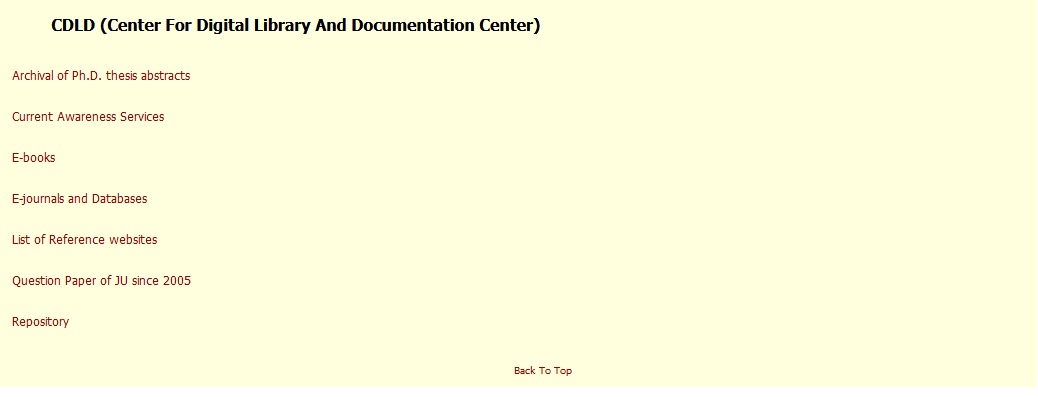Chemical Project Engineering & Economics B.E Question Paper : jaduniv.edu.in
Name of the University : Jadavpur University
Department : Chemical Engineering
Degree : B.E
Subject Name : Chemical Project Engineering And Economics
Year/Sem : IV/I
Website : jaduniv.edu.in
Document Type : Model Question Paper
Download Model/Sample Question Paper : https://www.pdfquestion.in/uploads/dspace.jdvu.ac.in/6577-Chemical%20Project%20Engineering%20and%20Economics.pdf
Jadavpur Chemical Project Engineering Question Paper
Bachelor of Engineering In Chemical Engineering Final Examination, 2014 :
( 4th Year, 1st Semester )
Time : Three hours
Full Marks : 100
** Answer three questions
** All questions do not carry equal marks.
Related : Jadavpur University Advanced Biochemical Engineering M.Tech Question Paper : www.pdfquestion.in/6574.html
1. Critically analyse the important factors for the selection of a suitable site for the setting-up of a pulp and paper industry. 15
2. Give an idea of the general considerations in case of selection of a heat exchanger. 15
3. What is a pilot plant ? Why pilot plant studies are conducted ? For what objectives a pilot plant can be used for ? 15

4. Refer to the enclosed PFD to answer the following questions.
a) What is the mass flow rate, temperature and pressure of the feed toluene and hydrogen ? 6
b) How is the liquid level in the toluene storage drum controlled ?
c) How the flow rate of toluene to the feed preheater is controlled ? 2
d) What is the feed inlet and outlet temperature to and from the fired heater ? 2
e) By what name is heat exchanger no. 6 better known ? 1
f) By what name is heat exchanger no. 4 better known ? 1
g) What is the need of heat exchanger no. 5 ? 1
h) The effluent from reactor no.1 enters into the benzene separation column no. 1. Name and label the units which lie in between. 4
i) By what name is pump no. 2 better known ? 1
Fundamentals Of Chemical Engineering :
** Features of organized chemical processing- from Chemistry to Chemical Engineering, Chemical Industry- scope, features & characteristics.
** Unit Operations in Chemical Engineering – an overview.
** Units and Dimensions – Systems of units, Conversion of units, Dimensional homogeneity and consistency, dimensional analysis, dimensionless groups and their use in chemical engineering.
** Process Variables – mass, volume, pressure, temperature, chemical composition, flow rates. Single Phase Systems: Solids, liquids, ideal gas and real gases; Equations of State; Compressibility factor charts; estimation of densities and heat capacities of solids, liquids and gases, and their mixtures, Mixing Rules e.g. Kay’s Rule.
Multi-phase Systems:
** Outlines of unit operations involved in separating multiphase systems – distillation, crystallization, absorption, adsorption, extraction, leaching, evaporation, drying etc.;
** Single-component phase equilibrium – phase diagrams, estimation of vapor pressure using Clausius-Clapeyron Equation, Cox Charts and Antoine Equation, Gibbs’ Phase Rule;
** Gas-Liquid Systems – saturation, saturated/ superheated vapor, humidity, psychrometric charts, boiling point, dew point, bubble point, degree of superheat, Raoult’s Law and Henry’s Law for multi-component
** gas-liquid systems; Solutions of solids in liquids – solubility and saturation, phase diagrams;
** Immiscible and partially miscible liquids – miscibility and distribution coefficients, phase diagrams for ternary systems.
** Process Data Representation and Analysis – interpolation and extrapolation, curve-fitting and least squares method, fitting a line to scattered data.
Chemical Process Calculation :
Concepts of chemical similitude and scale up, Material balances: Fundamentals;
** Batch and flow processes, Steady-flow and unsteady processes, material balance calculations for single-unit and multiple-unit processes, material balance for reactive and non-reactive systems, processes with recycle and/or bypass with or without purge, material balance for combustion reactions, unsteady-state and transient processes.
Energy balances :
** Introduction to energy balances, energy balances on closed and open systems – the steady-flow energy equation, mechanical energy balances, tables of thermodynamic data. Energy balances on nonreactive processes – state properties and hypothetical process paths employed for their estimation, energy balances for phase change operations, heat of mixing and heat of solution – energy balance for mixing and dissolution processes.
** Energy balances on reactive processes – heats of reaction, measurement and calculation of heats of reaction – Hess’s Law, formation reactions and Heats of Formation, Heats of Combustion, Energy balances for combustion reactions – adiabatic reaction temperature, theoretical flame temperature. Combined material and energy balances including some typical industrial problems.